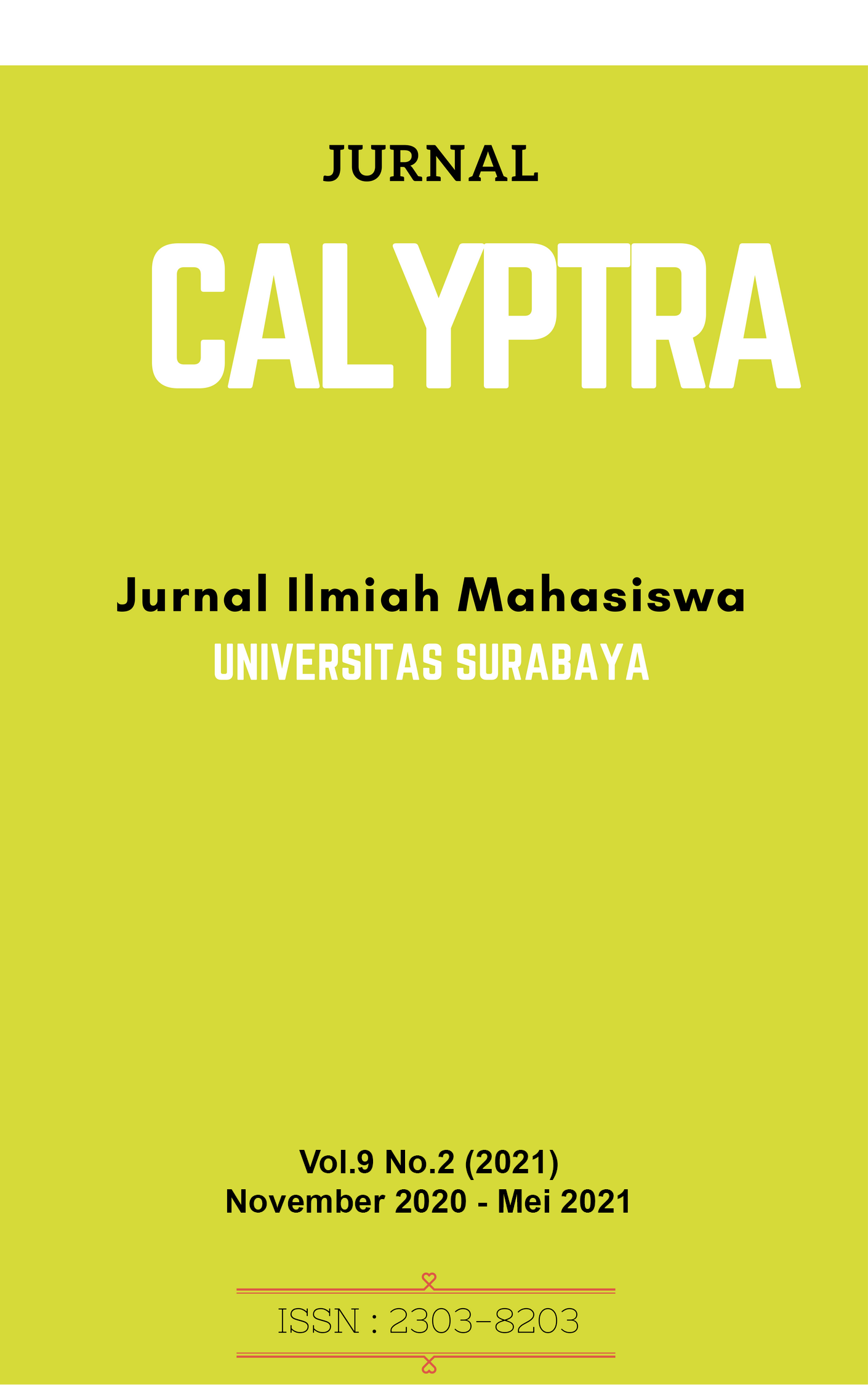HUBUNGAN ANTARA NICOTINE DEPENDENCE SYNDROME DENGAN INSOMNIA PADA MAHASISWA DI KOTA SURABAYA
 Abstract Views:
520 times
Abstract Views:
520 times
 PDF Downloads:
537 times
PDF Downloads:
537 times
Abstract
Abstract — Indonesia is one of the countries according to the survey included in the top 3 countries consuming the most cigarettes in the world. In Indonesia, many people who are addicted to nicotine are proven from a survey that says that every person in Indonesia will spend 1085 cigarettes per year, which means that 2‐4 cigarettes are consumed every day. There are many phenomena about the number of students who are seen eating, drinking and smoking while chatting with their friends in their favorite places, especially in Surabaya. This takes place during most people's biological sleep hours. researchers want to prove the truth that smoking can cause insomnia. This study aims to determine the relationship between nicotine dependencesyndrome with insomnia symptoms in students who smoke while experiencing insomnia in the city of Surabaya. With 200 participants who are active students every day always smoke. This study uses 2 questionnaires namely Nicotine Dependence Syndrome Scale to measure nicotine dependence and KSPBJ‐IRS (Jakarta Biological Psychiatric Study Group ‐ Insomnia Rating Scale) to measure insomnia. Then the data is coding and analyzed using SPSS. Based on the results of the study it can be seen that the correlation value of the two nicotine dependence variables and insomnia produce a correlation value of 0.00 which is smaller than the P table value of 0.05 (0.00 <0.05), it is concluded that nicotine dependence is related to social anxiety in active smoker students in Surabaya. The effective contribution of nicotine dependence is 0.582. Another result is the Nicotine Dependency variable with insomnia has a positive / unidirectional correlation (r = 0.443).
Keywords: Nicotine Dependence Syndrome, insomnia
Abstrak— Indonesia adalah salah satu negara yang menurut survei masuk dalam 3 besar negara pengkonsumsi rokok terbanyak di dunia. Di indonesia banyak orang yang ketergantungan nikotin terbukti dari survei yang menyebutkan setiap orang di indonesia akan menghabiskan 1085 rokok per tahun berarti setiap hari 2‐4 rokok habis di konsumsi. Banyak fenomena mengenai banyaknya mahasiswa yang terlihat sedang makan, minum, dan merokok sambil mengobrol dengan teman mereka ditempat faforit mereka khususnya di wilayah surabaya. Hal tersebut berlangsung saat jam tidur biologis kebanyakan orang pada umumnya. peneliti ingin membuktikan kebenaran bahwa rokok dapat menyebabkan insomnia. Penelitian ini bertujuan untuk mengetahui hubungan antara nicotine dependencesyndrome dengan gejala insomnia pada mahasiswa yang merokok sekaligus mengalami insomnia di kota Surabaya. Dengan 200 partisipan yang merupakan mahasiswa aktif setiap hari selalu merokok. Penelitian ini menggunakan 2 angket yaitu Nicotine Dependence Syndrome Scale untuk mengukur ketergantungan nikotin dan KSPBJ‐IRS (Kelompok Studi Psikiatri Biologik Jakarta ‐ Insomnia Rating Scale) untuk mengukur insomnia. Kemudian data di coding dan dianalisis menggunakan SPSS. Berdasarkan hasil penelitian dapat diketahui bahwa nilai korelasi 2 variabel nicotine dependence syndrome dengan insomnia menghasilkan nilai korelasi 0,00 yang lebih kecil dari nilai P tabel yang sebesar 0,05 (0,00< 0,05), disimpulkan bahwa ketergantungan nikotin berhubungan dengan kecemasan sosial pada mahasiswa perokok aktif di surabaya. Sumbangan efektif ketergantungan nikotin adalah 0,582. Hasil lainnya adalah variabel nicotine dependence syndrome dengan insomnia memiliki korelasi positif/ searah (r=0.443).
Kata kunci: Nicotine Dependence Syndrome, insomnia
Downloads
References
Smet & Bart. (1994). Psikologi Kesehatan. Jakarta : Grasindo
Leventhal, H& Cleary, PD. (1980). The Smoking Problem: A Review of the Research
and Theory in Behavioral Risk Modification. Psychological Bulletin. 80(2), 370‐405
Annahri, M. (2013). Hubungan antara Perilaku Merokok dengan Angka Kejadian
Insomnia pada Mahasiswa Fakultas Kedokteran Universitas Lambung
Mangkurat. Banjarmasin : Universitas Lambung Mangkurat. Jurnal Psikologi.
Benowitz, N.L & Katzung, B.G. (2001). Obat Antihipertensi Farmakologi Dasar dan
Klinik, ditejemahkan oleh Sjabana, D., Rahardjo, Sastrowardoyo, W., &
Hamzah, Salemba Medika. Jakarta.
National Center for Health Statistics. (2008). International Classification of
Disease. Tenth Revision (ICD‐10).
Kotlyar, M and Hatsukami, DK. (2002). Managing Nicotine Addiction. Journal of
Dental Education, 66(9): 1061‐1073.
Picciotto, M. R., Lewis, A. S., van Schalkwyk, G. I., & Mineur, Y. S. (2015). Mood
and anxiety regulation by nicotinic acetylcholine receptors: a potential pathway
to modulate aggression and related behavioral states. Neuropharmacology, 96,
‐243
Dani, J. A., Ji, D., & Zhou, F. M. (2001) . Synaptic plasticity and nicotine
addiction. Neuron, 31(3), 349‐352.
- Articles published in CALYPTRA are licensed under a Creative Commons Attribution-ShareAlike 4.0 International license. You are free to copy, transform, or redistribute articles for any lawful purpose in any medium, provided you give appropriate credit to the original author(s) and the journal, link to the license, indicate if changes were made, and redistribute any derivative work under the same license.
- Copyright on articles is retained by the respective author(s), without restrictions. A non-exclusive license is granted to CALYPTRA to publish the article and identify itself as its original publisher, along with the commercial right to include the article in a hardcopy issue for sale to libraries and individuals.
- By publishing in CALYPTRA, authors grant any third party the right to use their article to the extent provided by the Creative Commons Attribution-ShareAlike 4.0 International license.



